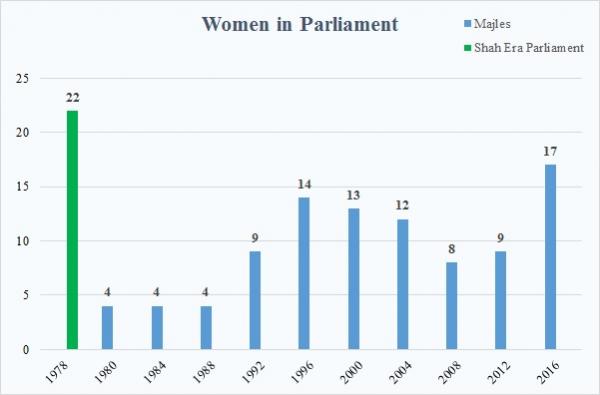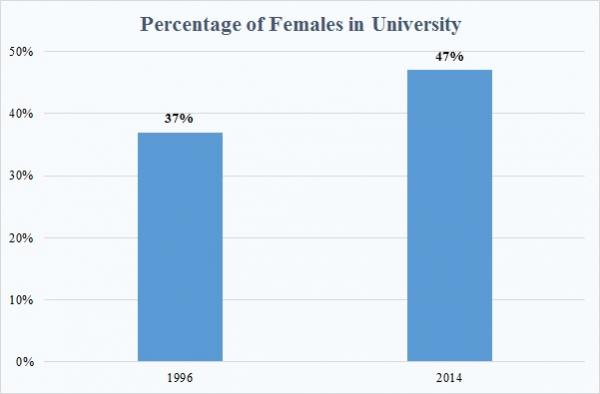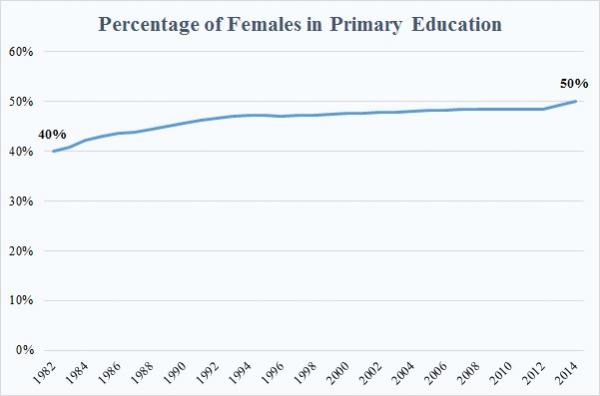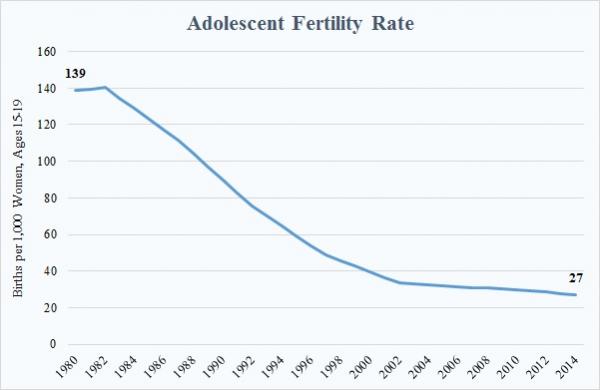Iran has closed some gender gaps, although Iranian women still do not have equal rights and protections under the law and in practice. Female literacy has almost quadrupled since 1980 and was within ten percentage points of male literacy in 2015. Since 2000, women have made up about half of all university students and have increased as a percentage of students enrolled in primary education. The adolescent fertility rate has dropped precipitously since 1980, due to better reproductive health and sexual education for women.
Women are increasingly participating in the political sphere, despite legal and societal impediments. President Hassan Rouhani appointed four women as vice presidents and three women as governors following his 2013 election. Women won an all-time high number of seats in the 2016 parliamentary election.
- Women in Parliament: Went up to 17 seats in 2016 – the highest in the history of the Islamic Republic. Not as high, however, as the 22 seats held by women in the last parliament under the shah.
- Women in University: Increased slightly since 1996, but has generally remained at about half of students.
- Female Primary Education: Female enrollment in primary education generally increased from a low of 40 percent in 1982 to a high of 50 percent in 2014.
- Adolescent Fertility Rate: As high as 140 births per thousand women aged 15-19 in 1982, to as low as 27 births per thousand in 2014.

(1978): The Iran Primer
(1980-2016): The Iran Primer; The Iran Primer source: Ministry of Interior



Katayoun Kishi is a research assistant at the U.S. Institute of Peace.
